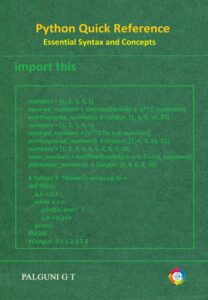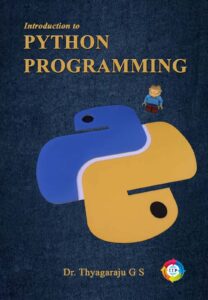Introduction: The AI Revolution and Its Implications
Artificial Intelligence (AI) is rapidly transforming the world of work, reshaping industries, and redefining employment patterns. From automated customer service bots to AI-driven predictive analytics in finance, this technology is not just augmenting existing jobs—it is fundamentally altering them. While AI presents opportunities for efficiency, innovation, and economic growth, it also brings forth serious concerns regarding job displacement, skill gaps, and socioeconomic inequality.
To ensure that AI serves as an enabler rather than a disruptor, businesses, governments, and educational institutions must adopt proactive strategies to equip the workforce with the necessary skills, redefine job roles, and implement policies that safeguard employment stability.
This article delves deep into the changing landscape of employment, the evolution of job roles, and the measures that can be taken to mitigate AI’s adverse effects on workers.
The Evolution of Job Roles: From Traditional to AI-Augmented Professions
AI is automating tasks that were once considered exclusive to human labor, leading to a fundamental shift in job roles. However, rather than simply replacing jobs, AI is altering the nature of work by augmenting human capabilities.
1. The Transformation of Existing Jobs
Many traditional job roles are evolving to incorporate AI-driven tools. Employees who once performed routine, repetitive tasks are now required to adapt to AI-powered workflows. Some examples include:
- Manufacturing: AI-driven robotics and automation are taking over repetitive assembly-line tasks. However, this shift has led to the demand for skilled workers who can program, operate, and maintain these machines.
- Healthcare: AI-powered diagnostic tools assist doctors in identifying diseases such as cancer at an early stage, improving accuracy and speed. Instead of replacing doctors, AI augments their decision-making capabilities.
- Finance: AI algorithms now handle financial modeling, fraud detection, and risk assessment. Financial analysts are no longer solely number-crunchers but strategic advisors who interpret AI-driven insights.
2. The Emergence of New Professions
AI has also paved the way for entirely new job categories. Some emerging roles include:
- AI Ethics Specialists: Experts who ensure that AI systems are fair, transparent, and free from bias.
- Data Scientists and AI Engineers: Professionals who develop, train, and refine AI algorithms.
- Human-AI Collaboration Specialists: Experts who design workflows that maximize human and AI collaboration in various industries.
3. Jobs at Risk: The Automation Threat
While AI creates new roles, it also threatens to eliminate certain job categories, particularly those involving repetitive tasks that require minimal cognitive effort. Jobs that are highly susceptible to automation include:
- Retail Cashiers: Self-checkout systems and AI-powered stores (e.g., Amazon Go) reduce the need for human cashiers.
- Data Entry Clerks: AI can extract, process, and analyze data with greater accuracy and speed than humans.
- Basic Customer Service Representatives: AI chatbots are increasingly handling customer inquiries, reducing the need for human representatives.
To mitigate job losses, reskilling and upskilling initiatives must be prioritized to transition affected workers into new roles.
Impact on Employment: Job Creation vs. Job Displacement
The relationship between AI and employment is complex. While AI-driven automation may displace some jobs, it also creates new opportunities. The key challenge lies in ensuring that job creation outpaces job displacement.
1. Job Polarization and the Disappearance of Mid-Level Jobs
AI’s impact on the labor market has led to job polarization, where high-skilled, well-paying jobs increase while low-skilled jobs remain stagnant or decline. The middle-skill segment—such as clerical work, routine manufacturing, and administrative roles—is shrinking due to automation.
For instance, in the banking sector, AI-driven chatbots and digital assistants are reducing the need for human tellers. However, at the same time, demand for AI engineers and cybersecurity specialists is rising. This creates a gap where those who lose jobs in traditional roles may struggle to transition into AI-driven careers without proper retraining.
2. The Rise of the Gig Economy and AI-Enabled Freelancing
AI has also fueled the rise of the gig economy, allowing individuals to work remotely and flexibly through platforms like Upwork and Fiverr. AI-powered job-matching algorithms enable companies to find freelancers with precise skills, leading to new employment models.
For example, graphic designers now leverage AI-driven design tools (such as Adobe Sensei) to enhance creativity, while freelance content creators use AI-powered SEO tools to optimize their work. However, the gig economy also presents challenges, such as job insecurity, lack of benefits, and unpredictable income.
Strategies for Addressing AI’s Workforce Challenges
To ensure AI serves as a tool for workforce empowerment rather than displacement, proactive measures must be taken at multiple levels—government policies, corporate strategies, and individual learning initiatives.
1. Reskilling and Upskilling Programs
Governments and organizations must invest in large-scale reskilling initiatives to help workers transition into AI-driven roles. Some key strategies include:
- Government-Funded Training: Programs like Singapore’s “SkillsFuture” provide financial support for citizens to acquire AI and digital skills.
- Corporate Reskilling Initiatives: Companies like Amazon have invested millions in upskilling their workforce, training employees for technical roles such as cloud computing and AI development.
- AI Bootcamps and Online Courses: Platforms like Coursera, Udacity, and LinkedIn Learning offer AI-focused courses that workers can take to develop new skills.
2. Implementing AI Ethically and Responsibly
Ethical AI development is crucial to ensuring that AI-driven job automation does not disproportionately harm certain demographics. Key considerations include:
- Bias-Free AI Algorithms: AI systems must be designed to avoid biases that could lead to unfair hiring practices or discriminatory job displacement.
- Transparency in AI Decisions: AI-driven hiring and employee evaluation systems should be transparent to ensure fair treatment of workers.
3. Strong Policy and Social Safety Nets
Governments must implement policies to support workers affected by AI-driven job disruptions. Potential measures include:
- Universal Basic Income (UBI): Some countries, such as Finland, have experimented with UBI to provide financial security to those impacted by automation.
- Employment Transition Assistance: Programs that offer career counseling, job placement services, and financial aid for those shifting to new careers.
Conclusion: Preparing for an AI-Driven Future
Artificial Intelligence (AI) is reshaping the employment landscape, leading to both the creation of new job roles and the displacement of existing ones. Below is a statistical analysis summarizing key insights from the article “The Impact of AI on Job Roles, Workforce, and Employment: What You Need to Know”:
| Aspect | Statistic | Source |
|---|---|---|
| Job Creation by 2030 | AI is expected to create 20-50 million new jobs globally by 2030. | Innopharma Education Blog |
| Job Displacement by 2025 | AI may displace 75 million jobs globally by 2025. | Innopharma Education Blog |
| Net Job Gain by 2025 | Despite displacement, AI is projected to create 133 million new jobs by 2025, resulting in a net gain of 58 million jobs. | Innopharma Education Blog |
| Worker Concerns About AI | 30% of workers fear their jobs will be replaced by technology in the next three years. | Inventiva Article |
| Job Displacement in BPO Sector | The BPO sector is at particular risk, with employment expected to decline over the next 10 years due to AI advancements. | TimelineDaily Article |
| AI’s Economic Impact by 2030 | AI’s economic impact is projected to reach $15.7 trillion globally by 2030. | Inventiva Article |
| Workers Requiring Retraining | Approximately 120 million workers worldwide may need retraining in the next three years due to AI integration. | Inventiva Article |
| AI Exposure in Indian Employment | In India, 26% of employment is highly exposed to AI, with 14% having high complementarity and 12% low complementarity. | TimelineDaily Article |
These statistics underscore the dual-edged nature of AI’s impact on employment, highlighting both the opportunities for job creation and the challenges related to job displacement and the need for workforce adaptation.
The rise of AI is inevitable, and its impact on job roles, workforce dynamics, and employment is a serious issue that must be addressed. While AI presents challenges, it also offers unprecedented opportunities for innovation, efficiency, and economic growth.
To ensure AI benefits society as a whole, governments, businesses, and individuals must adopt a forward-thinking approach. Reskilling programs, ethical AI implementation, and comprehensive policy frameworks will be critical in shaping a future where humans and AI coexist in a mutually beneficial manner.
The AI revolution is not about replacing humans but rather about augmenting human potential. By embracing continuous learning and adapting to change, we can navigate this transformation successfully and create a future of work that is more inclusive, productive, and fulfilling.
...Dr.Thyagaraju G S




